Like a hammer on an anvil, the din and clank of sword and shield rang out across the dusty field. Except, it was a hundred anvils.
Men cried and men died. Men and other things. Humanoids. Hobgoblins.
Surrounded by eight hobgoblins, an armored dwarf peered from beneath odd-looking headgear, a helmet fashioned in the shape of a steel octopus with its tentacles caressing the dwarf’s head. These human soldiers were not weaklings. If he did not change things, his hobgoblins could be overrun.
He casually moved his war hammer from his right hand to his left hand and put the index finger of his gauntleted right hand to his lips.
“Shoosh!” was the sound that reverberated across the battlefield. Then the dwarf issued a torrent of whispers in the common tongue.
“Walk, walk. You must walk. Walking is good for you! You need your exercise. You must walk now!”
One of the soldiers fighting closest to the dwarf suddenly turned his back to walk away despite being in the middle of a fierce melee with a hobgoblin. The dwarf couldn’t help but laugh as the hobgoblin buried the blade of his longsword in the unfortunate human’s neck.
As he surveyed the carnage, many humans suffered similar fates. Those that were not cut down walked into other parts of the field and caused even more chaos. This dwarf loved chaos.
A few hardy humans were able to resist the dwarf’s whispers, but they were isolated from their friends. Such is war. The dwarf knew those brave souls would die where they stood.
Perform Bewitching 5e Guide: Bottom Line
Bewitching Whispers is a warlock invocation that has the same effect as the spell Compulsion.
What is Bewitching Whispers?

Bewitching Whispers is an Eldritch Invocation for warlocks 7th level and above. You must use a spell slot to use it and you can only use this invocation once per long rest, not once per short rest. As an invocation, it has the exact same effects as Compulsion Spell.
What is Compulsion?
Compulsion affects creatures that you choose within a range of 30 feet. This means that you don’t have to worry about affecting your friends. You must be able to see the victims and they must be able to hear you. Creatures that can’t be charmed are immune.
Victims are allowed a Wisdom saving throw. If they fail, you compel them to move in any horizontal direction of your choice at their maximum movement. You choose this direction as your bonus action. You are allowed to pick a direction as a bonus action for the duration of the spell.
The victims are allowed to take their actions each turn before being compelled to move. After their turn’s movement, they are allowed to make a Wisdom saving throw at the end of each turn. Targets are not compelled to move into hazardous terrain/dangerous areas: off a cliff, into a Cloud of Daggers, into a moat full of alligators, etc. However, their compelled movement provokes opportunity attacks. Here are the spell’s stats:
- Compulsion: 4th level Enchantment
- Casting Time: 1 action
- Range: 30 feet
- Components: V, S
- Duration: Up to 1 minute, Concentration
Who Can Use Bewitching Whispers?
Warlocks can use Bewitching Whispers. Bards can use Compulsion.
Is Bewitching Whispers Good?
If you’re playing a conventional warlock, Bewitching Whispers may not be the best choice.
Why?
A conventional warlock is a master blaster and likes to max out Eldritch Blast with invocations like Agonizing Blast, Repellant Blast, and Eldritch Spear. Any invocations they have left over are going to serve 1 of 2 functions:
- an invocation that relates to their particular pact
- an invocation that doesn’t use any spell slots
Bewitching Whispers for some warlocks is not worth the price of an invocation.
Why?
- You have to give up a spell slot to cast it
- Unlike a warlock spell, Bewitching Whispers can’t be renewed after a short rest. You need a long rest. It’s the worst of both worlds.
- Any victims that make their Wisdom save suffer no damage or no ill effects whatsoever
- It’s not only a spell slot, but a 4th level spell slot. A warlock with a Fiend patron could simply spend a 3rd level slot on Fireball and renew after a short rest. Anyone who makes their save still takes half damage.
An unconventional warlock, however, might choose to spend an invocation on Bewitching Whispers. I define an unconventional warlock as a character that doesn’t put an emphasis on damage dealers like Eldritch Blast and prefers to focus on Mind Control/psionic type features like Bewitching Whispers. I believe this type of warlock typically has a Great Old One patron.
In my Character Build Section below I have a sample of such a character.
Bewitching Whispers Character Build
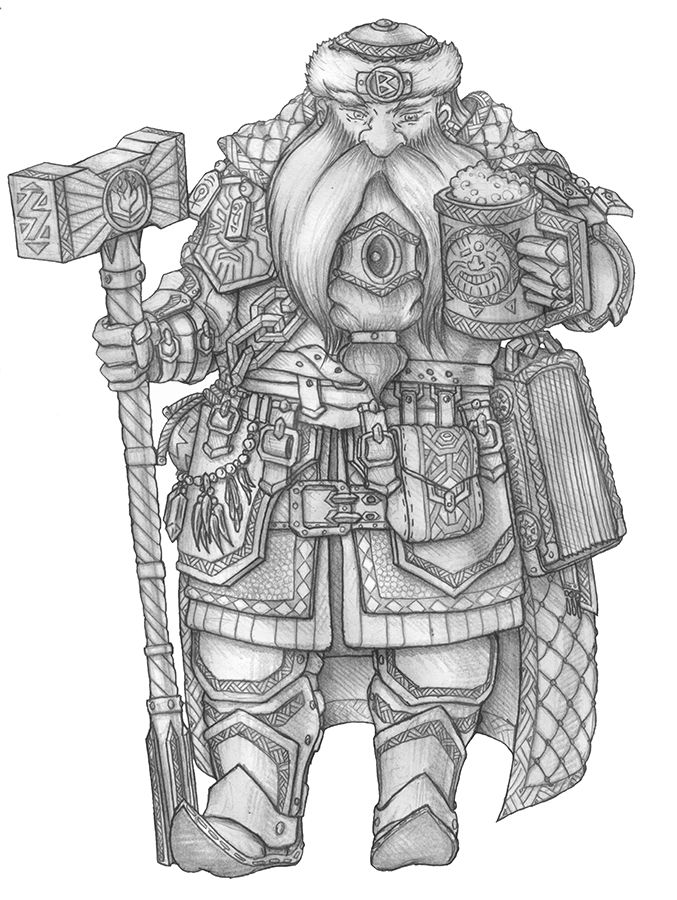
Thrain is a male mountain dwarf warlock who has chosen the Pact of the Tome. His patron is Hadar, who is both a Great Old One and a dying star.
Thrain is a caster more than a melee fighter but he is very “survivable” due to his high Constitution and ability to wear medium armor.
He wants to be a combination mind manipulator and utility caster while having the ability to strike fear in all who oppose him. His long-term goals include political power because, like many Great Old One warlocks, he is a bit of a puppet master.
Great Old One Warlock Abilities
| Ability | Strength | Intelligence | Wisdom | Dexterity | Constitution | Charisma |
| Standard Sequence | 15 | 14 | 13 | 12 | 10 | 8 |
| Customized Sequence | 10 | 13 | 8 | 12 | 14 | 15 |
| Racial ASI | +2 | +2 | ||||
| 4th Lvl. ASI | +1 | +1 | ||||
| Ability Scores Total | 12 | 14 | 8 | 12 | 16 | 16 |
| Ability Modifiers | +1 | +2 | -1 | +1 | +3 | +3 |
Great Old One Warlock Combat Stats
| Lvl | AC | HP | Move | Weapon | Equipment |
| 7 | 18 | 51 | 25 | +2 warhammer, +6/+3 Dam 1d10+3 (4-13) | +2 half plate, +2 warhammer, 2 +1 hand axes, 2 +1 daggers, 2 Healing Potions |
Great Old One Warlock Proficiencies
| Proficiency | Source | Type | Ability | Total Modifier |
| Smith’s tools | Race | Tool | Strength | +4 |
| Stonecunning | Race | Skill | Intelligence | +8 |
| Arcana | Class | Skill | Intelligence | +5 |
| Religion | Class | Skill | Intelligence | +5 |
| Athletics | Background | Skill | Strength | +4 |
| Persuasion | Background | Skill | Strength | +6 |
| Mason’s tools | Background | Tool | Strength | +9 |
| Carpenter’s tools | Background | Tool | Strength | +9 |
Great Old One Warlock: Cantrips, Spells, and Invocations
| Cantrips (3) +3 | Eldritch Blast, Minor Illusion, Mage Hand, Guidance, Thaumaturgy, Prestidigitation |
| 1st level (2) | Arms of Hadar, Dissonant Whispers |
| 2nd level (2) | Phantasmal Force, Detect Thoughts |
| 3rd level (2) | Hunger of Hadar, Vampiric Touch |
| 4th level (2) | Banishment, Evard’s Black Tentacles |
| Invocations (4) | Eldritch Sight, One With Shadows, Bewitching Whispers, Book of Ancient Secrets |
Ritual Spells: Thrain has many Ritual Spells in his Book of Shadows due to his Pact of the Tome and Book of Ancient Secrets invocation.
Class Features: Level Proficiency +3. Great Old One Features: Awakened Mind, Entropic Ward
How Does Bewitching Whispers Work?

Bewitching Whispers has a range of 30 feet. Its AOE (area of effect), however, is 30 feet in all directions from the caster, provided that the caster can see and hear all targets. In the grid on the left, each square is 5 feet.
C = caster/invoker
L = limits of the invocation’s AOE in each direction
In order to be used effectively, Bewitching Whispers requires some knowledge of the reach of your opponents. In order to maximize the AOE, you want as many opponents in your AOE at the time of casting without placing yourself in danger of your opponents’ reach. Missile attacks also have to be considered.
The next grid on the left represents an ideal situation. The caster is surrounded by soldiers. Each soldier is armed only with a longsword and therefore has a reach of only 5 feet. Each soldier takes up only 1 square on the grid, 5 feet.
S = swordsman (soldier armed with a longsword)
The caster maintains a 5-foot distance before invoking Bewitching Whispers so is just out of reach of the soldiers.
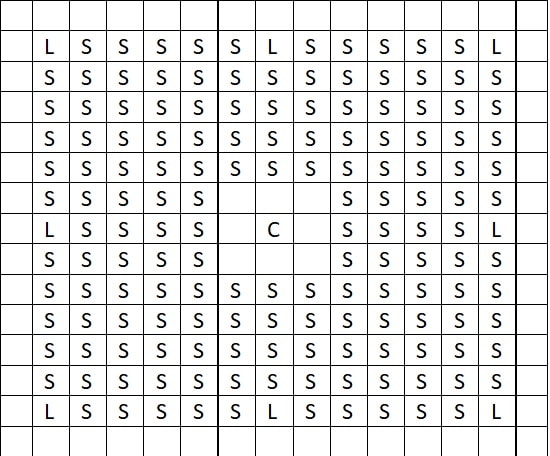
Assuming that the range begins outside the caster’s square, 30 feet of range takes up 6 squares in each direction. That means that a line extending from the caster forward and backward would be 13 squares total including the caster. The same would be said of a line extending right and left of the caster with the caster in the middle. With each line forming an axis, the grid would be 169 squares, 168 minus the caster’s square.
168 x 5 = the total AOE for Bewitching Whispers is 840 sq. ft.
A grid maintaining a distance of 5 feet in each direction would contain 8 squares without the caster.
168 – 8 = 160. That means that there are 160 squares available within the AOE that could be potentially filled with targets while still providing a safe 5-foot distance between the caster and the swordsmen. This means that if all the soldiers were to bunch up and try to surround the caster, the caster could potentially catch 160 soldier’s within the invocation’s AOE.
Of course, it’s unlikely that your character’s opponents would be so accommodating in an actual game, but 160 targets would be, in my opinion, the full potential of the spell for medium-sized creatures. Below is a more realistic scenario.
Thrain vs. 3 Soldiers
Thrain is faced with 3 soldiers who are standing 10 feet away. Normally, Thrain would be wise to invoke Bewitching Whispers as the soldiers are approaching, before they have a chance to move and attack. For demonstration purposes, however, I’ll say that the soldiers manage to get within 10 feet of Thrain before there is an initiative roll, which Thrain wins.
Meet the Soldiers
1 is armed with a longsword, 1 with a halberd, and another is armed with a longbow. They are protected with chainmail. Here are their stats:
| Weapon Stats | AC | HP/HD | STR | DEX | CON | INT | WIS | CHA |
| +4/+2 Att
|
16 | 16 (3d8+3) | 13 (+1) | 12 (+1) | 12 (+1) | 10 (+0) | 11 (+0) | 11 (+0) |
Skills: Perception +2, Athletics +3. Features: Formation Tactics, Multi-attack 2/turn
Longsword: +3 Att./+2 Dam. 1d10+2, 2/turn. If both attacks hit, 6-26 damage/turn
Halberd: +3 Att./+2 Dam. 1d12+2, 2/turn. If both attacks hit, 6-30 damage/turn
Longbow: +3 Att./+2 Dam. 1d8+2, 2/turn. If both attacks hit, 6-22 damage/turn
Round 1
Thrain’s Turn
Thrain invokes Bewitching Whispers and all three soldiers fail their Wisdom save. To calculate:
DC 8 + Casting modifier (+6) – Wisdom modifier (-0) Proficiency/ CR 2 = DC 12
Each soldier has to roll a 12 or higher on a d20 to make their Wisdom saving throws. This means that each soldier has a 45% chance of making his saving throw.
Soldiers’ Turn

Each soldier is allowed an action before being compelled to use his 30 feet of movement.
The swordsman cannot attack because his reach is 5 feet and he is not within 5 feet of Thrain.
The halberdier is 10 feet away and his reach is 10 feet, so he can attack. Because soldiers have the multi-attack feature, he attacks twice.
Because Thrain, as a mountain dwarf, has medium armor proficiency, his armor class is 18 and he is not so easy to hit. The halberdier misses once and hits once, doing 9 points of damage.
The bowman has a range of 600 feet and is only 10 feet away, so he can attack. Because he has the multi-attack feature, he fires twice. Like the halberdier, he misses once and hits once, doing 7 points of damage.
Constitution Checks
One of the drawbacks of Bewitching Whispers or any concentration spell/invocation are the Constitution checks.
Because Thrain has been hit twice and has taken damage twice, he must roll 2 Constitution checks:
DC 10 – CON mods. (+3) – Prof. mods (+3) = DC 4
If Thrain rolls 3 or lower, he fails his Constitution check. A 3 out of 20 chance is a 15% chance of failure. 100% – 15% = 85%.
Unless Thrain takes more than 20 points of damage from a single attack, his chance of passing every Constitution check is 85%.
Thrain passes both Constitution checks.
Compelled Movement
As his bonus action, Thrain can now direct the movement of the three soldiers on a horizontal plane. He directs them all to turn around 180 degrees and move away. They do not have to Dash, but they must use all of their movement, 30 feet, to move away from Thrain. Because they were standing 10 feet away from Thrain at the time Bewitching Whispers was invoked, they are 40 feet away from Thrain at the end of Round 1.
At the end of Round 1, the 3 soldiers are allowed a second saving throw to attempt to break the invocation’s effects.
The bowman and the halberdier fail their saving throws but the swordsman makes his save. The swordsman won’t be able to perform an action, however, until his turn next round.
Round 2
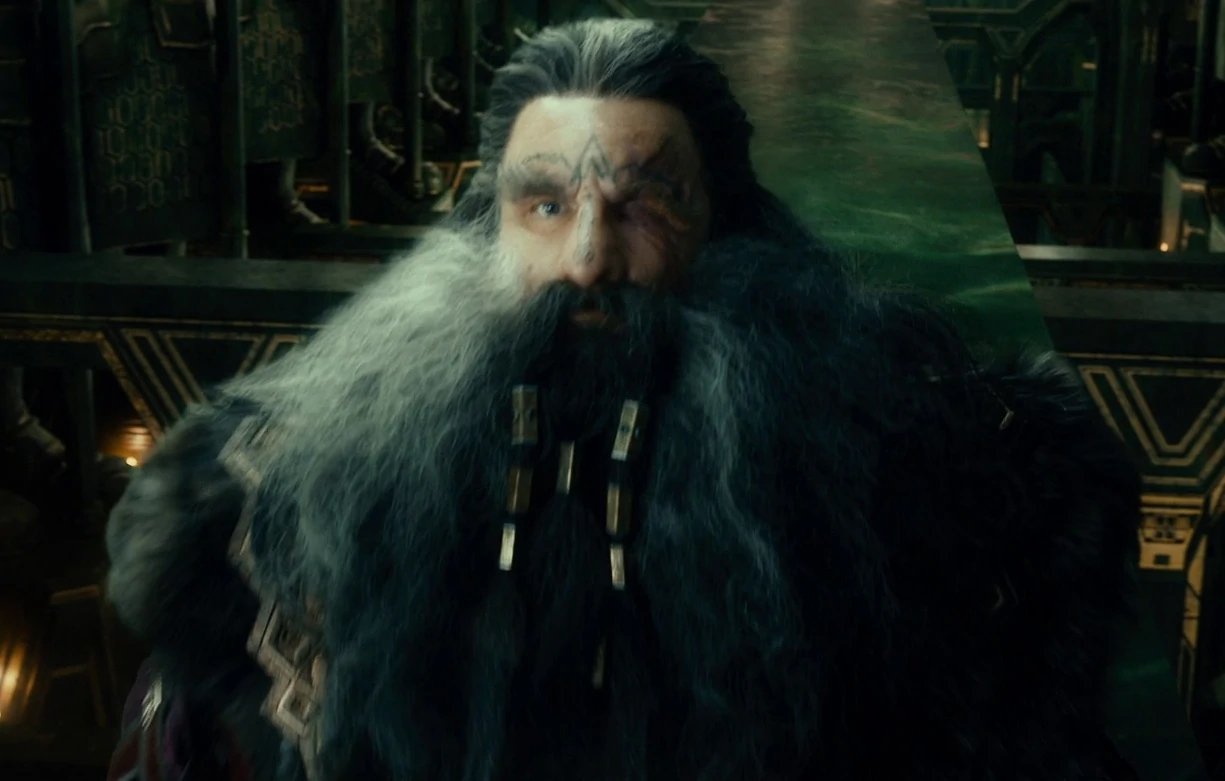
Thrain’s Turn
Thrain decides to take the Ready action and prepare to cast a spell if any of the soldiers continue to attack.
Soldiers’ Turn
The swordsman is now of the effects of Bewitching Whispers and wants to attack Thrain but is 40 feet away. With only 30 feet of movement, he cannot move to within his 5-foot reach and attack within the same round. He can Dash the full 40 feet but that would be his action and he would not be able to attack within the same turn. The swordsman decides to do an about-face and use his full 30 feet of movement to move toward the dwarf.
The bowman is allowed a full action, despite his failed save, before being compelled to move away for another turn. The soldier decides to shoot 2 more times.
Because the dwarf has been taking the Ready action, he gets to cast before the bowman can take his action.
Thrain decides to stop playing Mr. Nice Dwarf and target the bowman with a damage-dealing spell.
Because Bewitching Whispers is a concentration invocation, Thrain cannot cast concentration spells like Hunger of Hadar and Evard’s Black Tentacles without ending the invocation’s compulsion effect. Thrain decides to cast Dissonant Whispers, which is not a concentration spell.
Again, the bowman has to make a Wisdom save with a 45% chance of success. The bowman fails his save and takes 11 points of damage. The unfortunate archer shrieks in pain and drops his bow to clot the blood that comes gushing out of his ears.
The description for Dissonant Whispers says that victims who fail their saves must “immediately” move as far away from the caster as possible. Therefore, the bowman cannot attack before moving away an additional 30 feet.
After moving away, the bowman can attack from a distance of 70 feet. Unfortunately for the bowman, however, the shock of a psychic attack caused him to drop his longbow and he could not recover it because the spell forced his retreat to be immediate.
The halberdier cannot attack from a 40-foot distance and continues to be compelled to move away another 30 feet for a total distance of 70 feet away from Thrain.
The DM rolls a Perception check for the swordsman and decides that the soldier notices the fate of the bowman and halberdier in tandem with his movement after advancing 10 feet towards the dwarf.
The swordsman has a decision to make.
- He can move another 20 feet towards the dwarf and attack the next round.
- He can retreat.
- He can take a different action.
The swordsman knows that if he attacks the dwarf, he will be alone since his 2 comrades appear to be retreating and will be at least 70 feet away. Instead, he decides to move back 10 feet to recover the longbow, and Dash for what remains of his movement towards the other 2 soldiers.
Even though Dash is a full action, you can interact with an object in tandem with your movement. Therefore, the DM rules that the swordsman can run 10 feet back to the longbow on the ground, pick up the longbow, and Dash the 40-foot distance between him and his comrades.
At the end Round 2, the 3 soldiers are 70 feet away from Thrain and the bowman is 2/3 dead.
Analysis
For an invocation that acts as a 4th level spell and costs 1 spell slot, it leaves much to be desired. Even when the victims fail their Wisdom saves they can still attack and do damage. Reach weapons like halberds take up even more of your AOE if you want to keep a safe distance from them.
Ranged weapons can be even harder to deal with. The bowman’s longbow had a range of 600 feet. That means that had he not dropped his weapon, he could have failed his saving throw throughout the invocation’s duration, 10 rounds in a row, moving a total of 300 feet away, and still be capable of firing his longbow at Thrain.
Their chances of failing the save were not that much worse than 50/50. Even if they had no Wisdom and CR modifiers (challenge rating), their chances of succeeding on a save still would have been about 1 out of 3 against a 7th-level warlock.
Three CR2 monsters shouldn’t pose much of a problem for most 7th-level casters. Thrain had to burn through both of his spell slots on them because Bewitching Whispers couldn’t finish the job. Any caster with spells leveled 1-4 could have solved the problem better with a host of options: Shatter, Entangle, Spike Growth, Ice Storm, Hail of Thorns, Web, Fireball, etc.
A creative player can, however, find some unorthodox applications to maximize this invocation. If that intrigues you, read on.
Bewitching Whispers Applications
Applications for Bewitching Whispers are highly situational but it is only through these creative applications that this invocation could be competitive with other Eldritch Invocations like Agonizing Blast and Eldritch Sight.
Stampede

Had Thrain been facing a larger group of soldiers that had included cavalry, he could have targeted the horses. Horses won’t charge into something really dangerous like a pike phalanx, but other than that, trampling soldiers is what warhorses do.
It’s not unreasonable, then, for Thrain to be able to take control of 20-40 of the enemy’s warhorses, and use them to trample every other enemy unit on the field. Even if there are no infantry units available, Thrain could still compel the warhorses to crash into other cavalry units to break up formations and cause chaos.
Beyond horses, cows, buffalos, and any animals capable of trampling can create a good stampede. Boars are even better than horses because warhorses have a Wisdom of 12 (+1) and boars have a Wisdom of 9 (-1). Boars are, therefore, less likely to make their saving throws.
Swarm
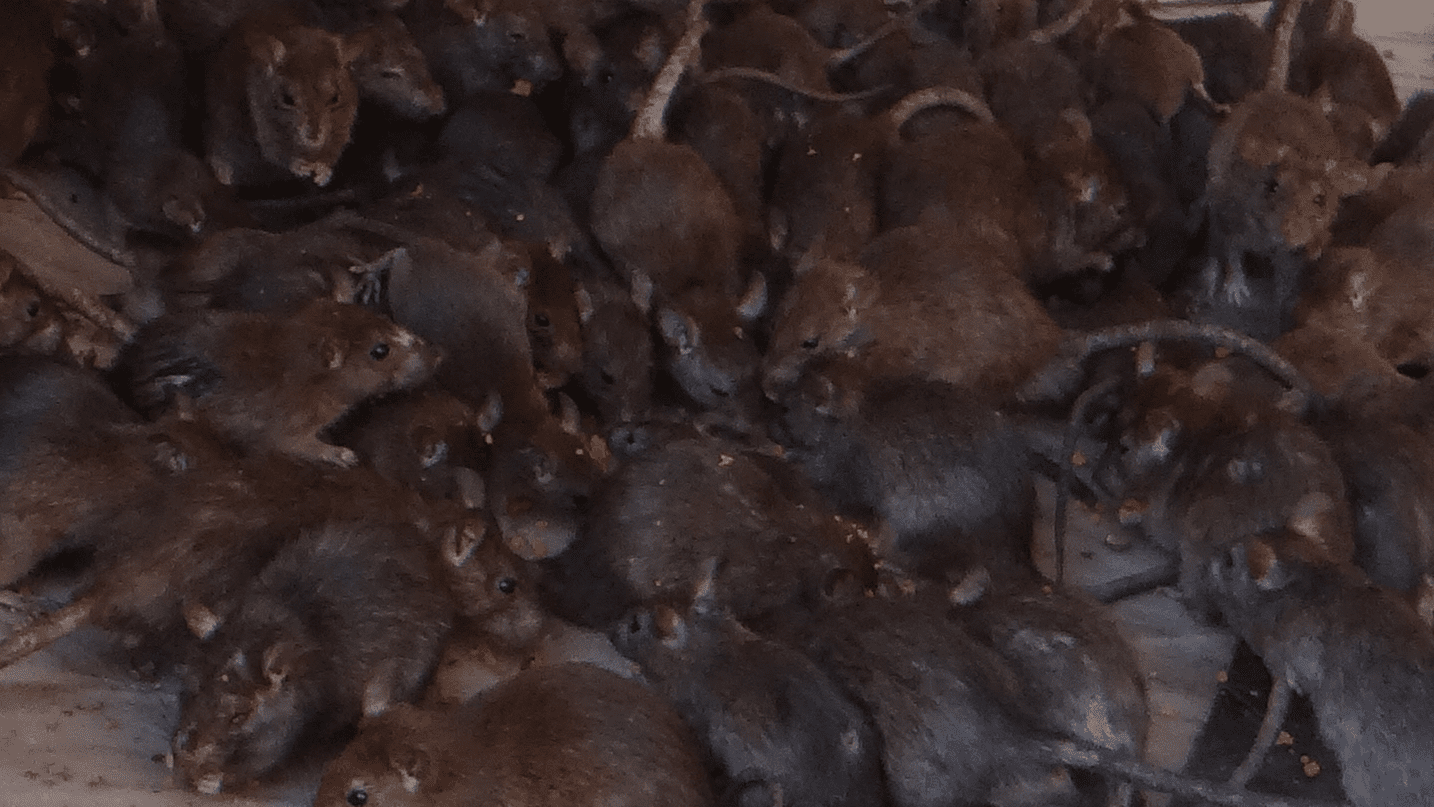
Bees, ants, rats, and bats are all examples of animals that can be used to create swarms. Some of these animals, like bees and army ants, have a low Wisdom, 8 (-1), and are more likely to fail their saving throws.
Army ants are particularly dangerous and can be very hard to defend against and destroy. Armor offers no protection against them as they are small enough to crawl into any of the armor’s openings and bite flesh.
Due to the spell’s relatively large AOE, you can possibly control a relatively large swarm with hundreds of insects and, consequently, hundreds of hit points.
Of course, compelling a swarm of insects to move into your enemies does not necessarily mean that they will attack. They could conceivably crawl right through a space occupied by your enemies without biting or stinging anything.
As a DM I would rule that the sound/vibrations of the Bewildering Whispers would make them very angry and threatened. That’s why they are compelled to move.
Due to that bad mood, any creatures caught in the path of such a swarm would provoke an attack if they resist in any way. Whether or not standing still or running would make the victims less threatening should be left to the DM. Giant insects can be compelled in the same way.
Can insects hear?
Obviously, rats and bats could hear, but insects don’t have ears. Instead of hearing through auditory canals, ants and other insects can sense sound through sensors on their feet and knees that can feel the vibrations caused by sound. Some strict DMs might not consider this the type of hearing that would leave a creature vulnerable to Bewitching Whispers, but I, as a DM, would leave it in for flavor.
Gauntlet
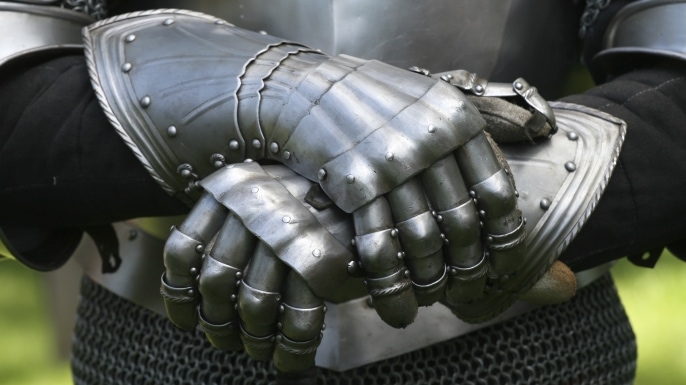
If your party wants to be sadistic, you can have all of the good melee combatants form two lines to create a corridor of pain, a gauntlet. Then your invoker can compel the victims into the gauntlet while his or her friends enjoy their opportunity attacks.
Free-for-All
This situation would probably give Bewitching Whispers the biggest advantage over other invocations and spells, but it is highly situational. Example:
Soldiers vs Hobgoblins
Thrain is leading a battalion of hobgoblins into battle. Their enemy comes from the same city-state where he fought those 3 soldiers before.
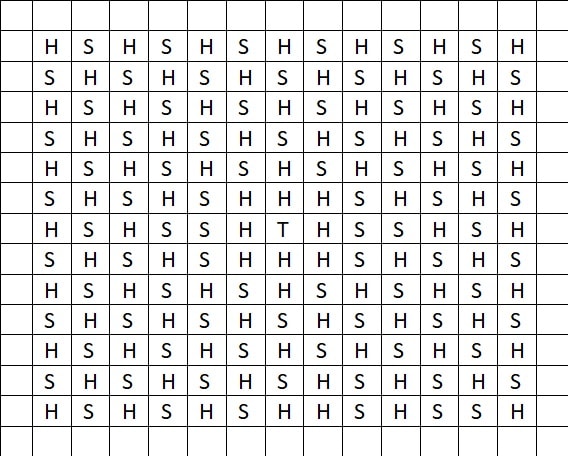
The clash of arms is very fierce and the melee devolves into chaos. There are not too many formations left on either side as hobgoblins and soldiers are simply brawling it out in single combat with similar numbers on each side.
Every square in the immediate vicinity is occupied by a combatant soldier or hobgoblin. (See the grid on the left) A square of 8 hobgoblins protects Thrain from the soldiers. Because the human soldiers have the multi-attack feature and the hobgoblins do not, the soldiers will probably win soon if Thrain doesn’t directly intervene.
T = Thrain
H = Hobgoblins
S = Soldiers
This is the perfect situation for Bewitching Whispers.
Why?
Thrain is allowed to choose his targets and avoid as many allies as he wants within the AOE. Practically no other invocation or spell allows him to do that on such a large scale. Even an Evocation Wizard using the Sculpt Spells feature could only protect a half-dozen or so combatants. If over 160 combatants are fighting in the AOE and half of them are allies, Thrain can protect over 80 allies with this invocation while attacking 80 enemies, all within the same AOE.
A fireball can’t do that!
Because hobgoblins are a different race than humans, Thrain shouldn’t have too much trouble telling allies from enemies. Even if some of the human soldiers escape Thrain’s line of sight, the majority will be in his line of sight and vulnerable to the invocation’s effects and required to make a Wisdom saving throw.
Even though the sounds of battle may drown out the whispers, Thrain can use the Thaumaturgy cantrip to amplify his voice. Because Thaumaturgy is not a concentration cantrip, he can have both Thaumaturgy and Bewitching Whispers in effect simultaneously. He can cast Thaumaturgy for the first round and Bewitching Whispers for the second round.
Even if half of the soldiers make their Wisdom saving throws, the invocation can still turn the tide of battle. If a sizable number of soldiers are forced to leave the immediate area, the ones that remain will be outnumbered.
Since Thrain has over 80 allies in the AOE, that means that his side will get 80 opportunity attacks on the enemy. As the enemy is compelled to go to other areas of the battlespace during other rounds, any allies in those areas will also be allowed opportunity attacks. Obviously, these compelled soldiers could also be used to break any enemy formations if any of those formations still exist during the chaotic melee.
FAQs
Question: Does Bewitching Whispers Invocation have the same components as Compulsion Spell?
Answer: Yes. You need to be able to talk and use at least 1 empty hand to invoke Bewitching Whispers.
Question: If a Bewitching/Compulsion victim is compelled to move out of the invocations AOE, do the magical effects end for that creature?
Answer: It’s not really specified in PHB (Player’s Handbook), but I would say that victims who continue to fail their saves are subject to the full effects regardless of whether or not their compelled movement takes them out of the AOE. In Compulsion’s description in PHB, p. 224, it clearly states, “Until the spell ends”. It doesn’t say anything about being within the AOE. Most creatures have a movement of about 30 feet/turn. Therefore, most creatures moving in any horizontal direction at their maximum movement would leave the AOE in a round or two. What’s the point of making this a concentration spell if it only lasts a round or two?
Question: If a victim of Bewitching Whispers makes his or her Wisdom save, does he or she have to roll again for future rounds?
Answer: No. In Compulsion Spell’s description, it says “Wisdom saving throw to end the effect”. It doesn’t say “recover” or “break free”, it says “end the effect”. That means if you make your Wisdom save, the spell/invocation no longer has an effect on you and you can enter and exit its AOE at will.
Question: Can I move different victims in different directions?
Answer: No. The description states that you only get 1 direction per bonus action.
Conclusion
Bewitching Whispers is a warlock Eldritch Invocation that has the same effect as Compulsion Spell. It requires a spell slot and, unlike warlock spells, can only be used once per long rest.
When invoked, it allows you to compel any creatures to move in any horizontal direction of your choice for the full duration as long as they continue to fail their Wisdom saving throws. This invocation requires concentration.
The real strength of Bewitching Whispers is that it is a selective, multi-target invocation. It has a fairly large AOE and lets you protect as many allies as you wish. There are not many spells in the game that can do that and only one invocation that can, Bewitching Whispers.
- Perform Bewitching 5e Guide - October 1, 2022
- Inspiring Leader 5e Guide - September 20, 2022
- Scrying 5e Guide - September 19, 2022

